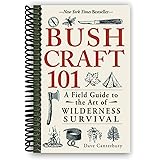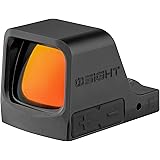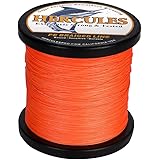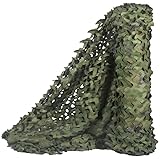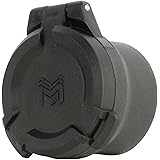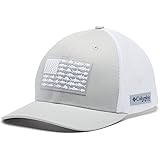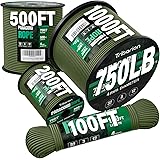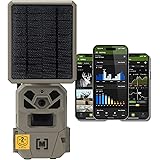Imagine the unsettling feeling of being utterly lost, the familiar world fading into an endless expanse of trees or mountains. No phone signal, no clear path, just you against the elements. It’s a scenario no one wants to face, yet as Lily eloquently demonstrates in the video above, being prepared with an ultimate survival kit can be the crucial difference between a terrifying ordeal and a manageable emergency. This isn’t just about having gear; it’s about having the right tools and the knowledge to use them effectively when every second counts.
While the video showcases a meticulously assembled, compact survival kit, there’s always more to learn and consider when building your own. Let’s delve deeper into why each item is indispensable and how you can optimize your personal wilderness survival strategy for peace of mind.
The Foundation: Your Compact Survival Container
At the heart of a truly effective ultimate survival kit is its container. Lily’s choice of a sardine can is ingenious, offering far more than just storage. This compact vessel boasts a volume of approximately 500 milliliters, or half a liter, making it perfectly sized for personal hydration needs.
Its flat shape is a distinct advantage. Imagine needing to boil water for purification or to prepare a quick meal in a remote area. You can effortlessly place this metal can directly onto hot coals, leveraging its heat conductivity to efficiently heat contents. Furthermore, its robust construction protects the precious contents from impact and moisture, a critical feature when you’re navigating rough terrain.
Mastering Fire: Your Lifeline in the Wild
Fire is not just for warmth; it’s a signal, a water purifier, a morale booster, and a defense against wildlife. The video highlights multiple methods, underscoring the importance of redundancy in any emergency kit.
- Bic Lighter: Often considered the easiest and most reliable fire starter, especially when conditions are damp. As Lily notes, while dry conditions are forgiving, weeks of rain make a lighter an invaluable asset.
- Matches: Housed in a waterproof bag, these provide a secondary, straightforward ignition source. Always ensure your matches are strike-anywhere or come with a reliable striking surface.
- Tea Light Candle: Beyond merely providing light, a candle can sustain a small flame, making it easier to dry out damp tinder or to provide a concentrated heat source within a makeshift shelter, like the emergency space blanket discussed later.
- Tinder Multiplicity: Lily includes several types of tinder. Tampons, often overlooked for their fire-starting potential, offer tightly packed, absorbent cotton that ignites easily. Cotton-filled straws, sealed with a lighter, serve as another excellent, dry tinder source. Even tissues, practical for cleaning glasses, double as effective kindling.
- Ferro Rod: This essential tool provides a high-temperature spark, unaffected by water. It’s an excellent backup, particularly if your lighter runs out of fuel or your matches are exhausted.
Navigation & Communication: Finding Your Way Back
Losing your way can quickly lead to panic. Reliable navigation and signaling tools are paramount.
- Dual Compasses: Having two compasses is a genius stroke of preparedness. In high-stress situations, psychological effects can make people doubt even reliable tools. A second compass offers validation and builds confidence.
- Signal Mirror: A heavy-duty signal mirror, complete with a protective foil and aiming hole, is a powerful communication device. Imagine you’re stranded; a flash of sunlight can be seen for miles, attracting attention from aircraft or distant search parties. It also serves a practical purpose for checking minor injuries.
- Loud Signal Whistle: Lily’s cherished Acme whistle from childhood proves that sometimes the simplest tools are the best. A whistle, especially a super loud one, conserves your voice and carries further than shouting. Three short blasts are a universal distress signal.
The video shares a poignant example of a 57-year-old hiker lost for 26 hours in the Austrian mountains in September. Her phone died, but she was eventually rescued because she had a red bivouac sack, which she used as a signal, drawing the attention of a helicopter. This underscores that visible signaling aids, alongside audible ones, are absolutely vital.
Sustenance & Hydration: Fueling Your Survival
Energy and hydration are non-negotiables for maintaining physical and mental stamina.
- Fishing Kit: A compact fishing kit with hooks, weights, and sturdy braided fishing wire offers a means to secure protein. This multi-purpose wire also serves for snares or other traps, expanding your foraging options.
- Emergency Rations (Gummy Bears): It might seem trivial, but as Lily highlights, a small amount of sugar like gummy bears provides both a quick energy boost and a significant psychological comfort. In a survival situation, even a tiny treat can uplift spirits and provide a much-needed mental break.
- Water Purification Tablets: Access to safe drinking water is critical. Water purifying tablets are compact and effective, with differing potencies (e.g., one tablet per liter or one per 750 milliliters, depending on the brand). Crucially, Lily cautions against overdosing, stressing the importance of knowing your specific brand’s instructions to avoid serious health risks.
- Heavy-Duty Plastic Bag: This versatile item not only helps keep your kit contents organized but also serves as an emergency water transporter. Its durability is key for collecting and carrying precious water.
Essential Tools for Preparedness
A well-chosen multi-tool or knife can perform countless tasks.
- Victorinox 111mm Knife: Lily’s favored Victorinox model with its robust features exemplifies a true survival workhorse. The locking blade is paramount for safety, preventing accidental closure during strenuous tasks and minimizing the risk of injury—a cut in the wilderness can quickly become life-threatening. The saw blade is invaluable for shelter building or preparing firewood, while the awl (especially the older model with a hole) can punch holes for cordage or for creating a handle for the sardine can.
- Heavy-Duty Safety Pin & Tweezers: These small items have a big impact. A safety pin can repair torn gear or act as a makeshift fishing hook. Tweezers are essential for removing splinters, thorns, or ticks, preventing infection and discomfort.
- Electrical Tape: Beyond resealing your kit, electrical tape is a versatile repair tool for gear, creating an improvised bandage, or securing items.
- Wire: Lily suggests using wire for a can handle, allowing safe handling over a fire. Furthermore, wire is excellent for crafting traps or improvising torches.
- Compact Flashlight (Olight): A powerful, small flashlight like the Olight mentioned ensures you can navigate and work in the dark, preserving valuable daylight hours for other tasks.
- Pencil: A simple pencil allows you to leave notes, map out routes, or even serve as a small, dry tinder extender.
Health & Hygiene in the Wilderness
Maintaining health and hygiene is often overlooked but critical for long-term survival and morale. Preventative measures and basic medical supplies keep small issues from becoming big problems.
- Mini Med Kit: Even a bare-minimum kit, as Lily describes, is better than nothing. Bandages, razor blades (for precise cuts or tinder preparation), sterile strips, and even a needle with thread for suturing severe wounds (if you have the training) are essential. Wet wipes and alcohol preps are crucial for cleaning wounds and maintaining basic hygiene, which prevents infection when far from medical help.
- Compressed Toilet Paper: A compressed cotton towel expands with water to provide toilet paper. Proper sanitation is vital for preventing illness in a survival scenario.
- Dental Floss: Not just for oral hygiene, dental floss is remarkably strong and can be used as emergency fishing line, for repairs, or even as snare material.
- Salt: Especially if you’re exerting yourself, sweating profusely, salt helps maintain electrolyte balance and stabilize blood pressure, combating potential dehydration and weakness. You’ll likely crave it intensely!
- DIY Insecticide: Lily’s non-toxic spray, made with water and four drops of essential oils (lavender for flies; clove bud, citronella, and peppermint for mosquitoes), is a clever solution. Remember to apply it to clothing, as concentrated essential oils can irritate skin.
- Tampons: Beyond their primary use for women (whose bodies can react to stress with earlier periods), tampons are excellent, absorbent tinder for fire starting.
Shelter & Comfort: Battling the Elements
Protection from the elements is a top priority.
- Emergency Space Blanket: This lightweight, reflective blanket can be used as an impromptu shelter, reflecting body heat to keep you warm. Lily’s clever tip of using it with a candle between your legs creates a surprisingly effective one-person emergency shelter, significantly enhancing your chances of enduring a cold night.
Real-World Scenarios: Why Preparedness Matters
The idea of getting lost might seem remote, but real-life events constantly remind us of its possibility. Lily shares compelling examples from Austria, a seemingly “overpopulated” country where wilderness encounters are still common.
- A 57-year-old female hiker, lost for 26 hours in the cold Austrian mountains in September, survived a night with a dead phone. Her red bivouac sack ultimately led to her rescue, a powerful testament to the value of signaling.
- Four students, unprepared for a mountain hike at 2800 meters, were forced to spend a night in freezing conditions. Rescuers couldn’t reach them until daylight, highlighting the extreme dangers of unpreparedness in high-altitude environments where even wood for fire is unavailable. In such scenarios, an emergency space blanket and a small candle become true lifesavers.
These stories aren’t just cautionary tales; they’re actionable lessons. They underscore that an ultimate survival kit isn’t a luxury for extreme adventurers but a practical necessity for anyone venturing into the outdoors, or even for unexpected roadside emergencies. Having these items on hand—and knowing how to use them—provides a tangible layer of security that can make all the difference when you’re truly stuck.


